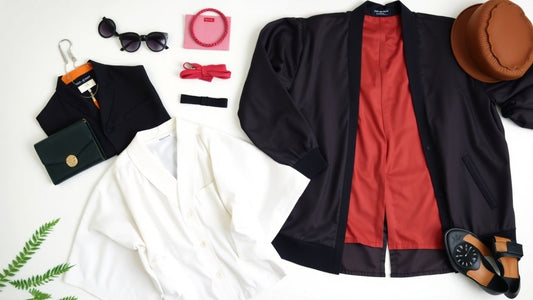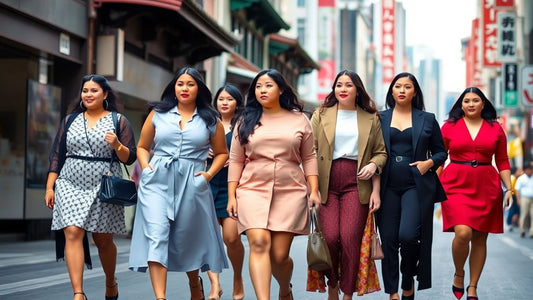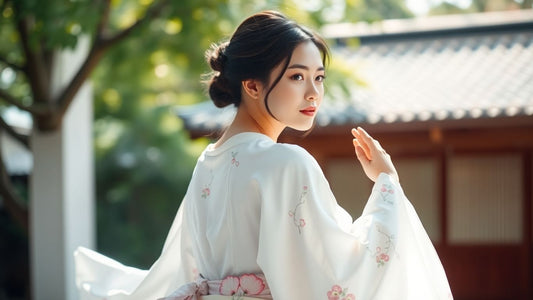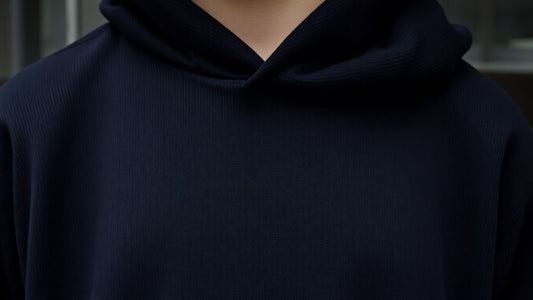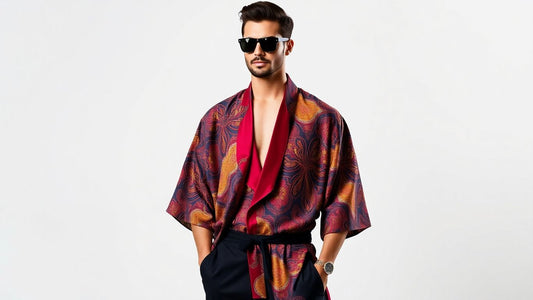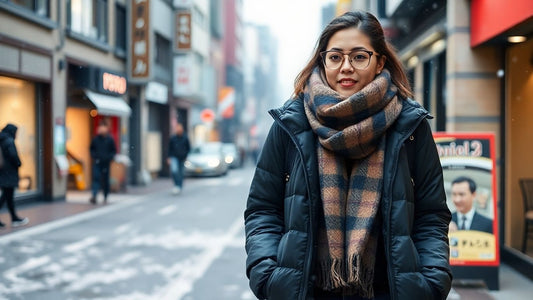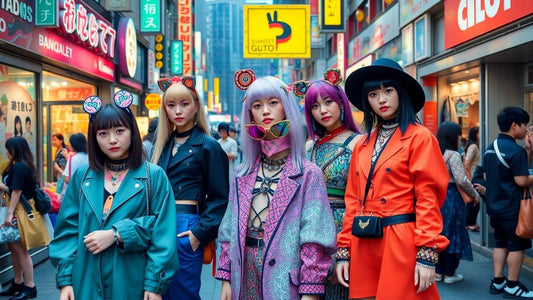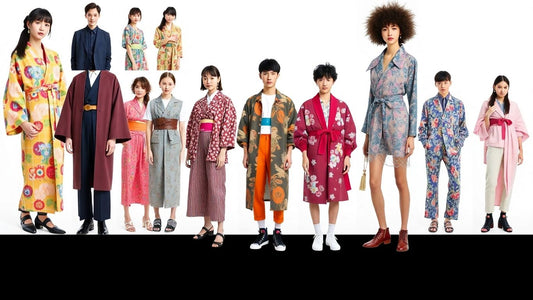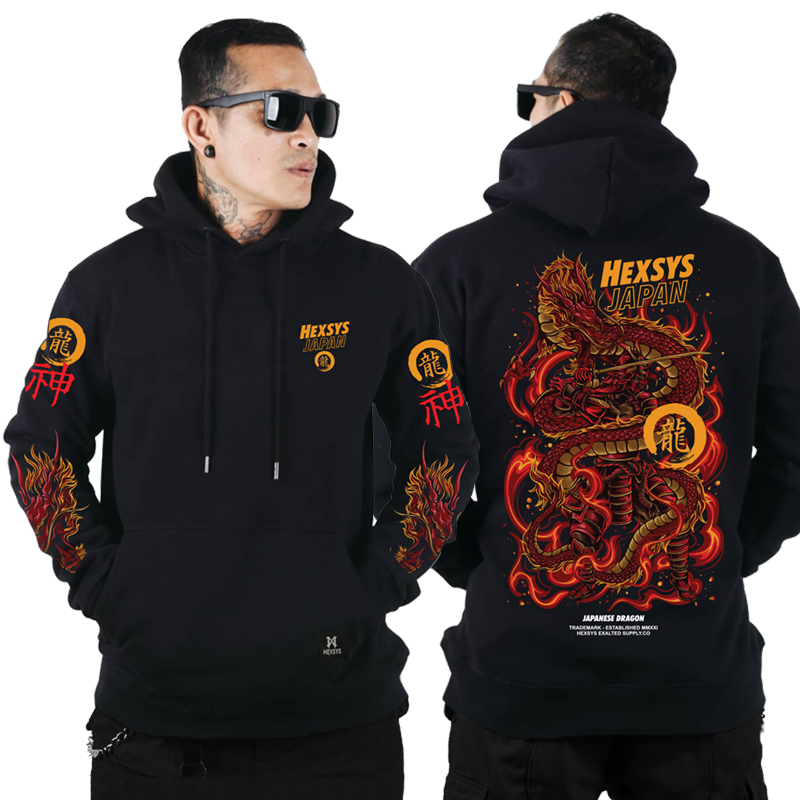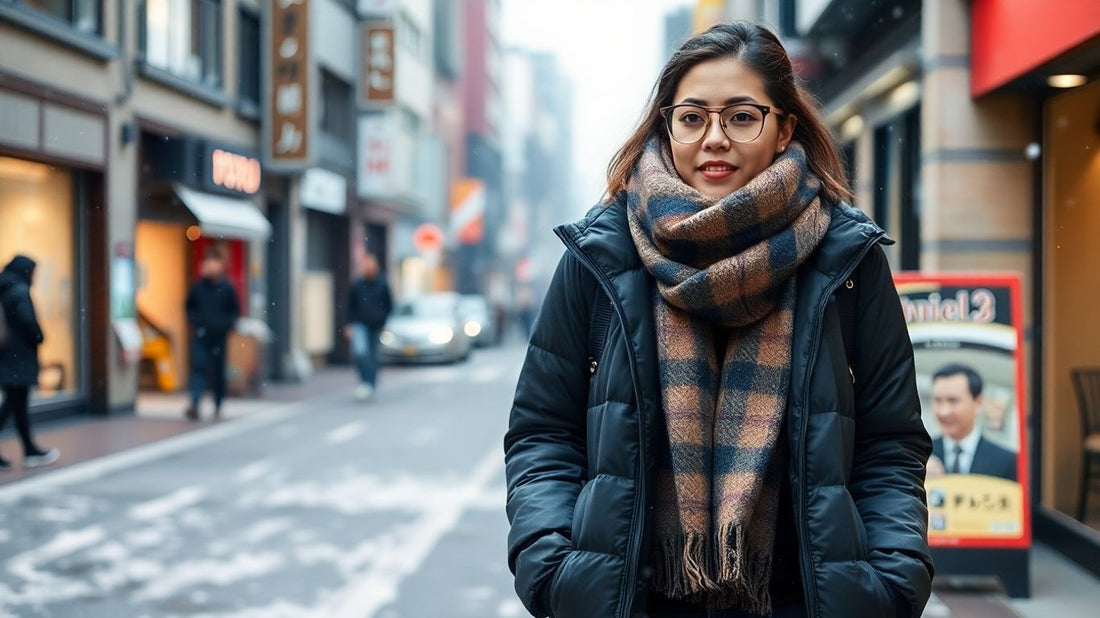
Mastering Japan Winter Wear Fashion: Essential Styles for the Cold Season
Planning a trip to Japan during the colder months? Figuring out what to pack can be a bit tricky, right? You want to stay warm, obviously, but you also want to look good and, you know, not stick out like a sore thumb. Japan has its own style, and especially in winter, it's all about looking put-together while staying cozy. This guide is here to help you nail that perfect Japan winter wear fashion, from the coats you choose to the socks you wear. We'll cover all the bases so you can explore the beautiful winter landscapes without a shiver in sight.
Key Takeaways
- When thinking about Japan winter wear fashion, outerwear is your first defense. Think about coats that are warm but not too bulky, and jackets that can handle a bit of weather. Waterproof and insulated options are great if you're heading to snowier spots.
- Layering is super important for staying comfortable. Start with a warm base layer, add an insulating mid-layer like a sweater, and then top it off with your jacket. This way, you can adjust as you go from outside to inside.
- Don't forget your lower half and feet! Warm trousers or jeans are a must, and comfortable, easy-to-remove shoes are practical. And seriously, good warm socks make a huge difference.
- Accessories are key to finishing your look and adding extra warmth. Hats, gloves, and scarves aren't just functional; they can really tie your Japan winter wear fashion together.
- Remember that Japanese culture values modesty and neatness. It's good practice to dress respectfully, especially when visiting temples or someone's home. Also, easy-to-remove shoes are a plus for places where you need to take them off.
Essential Outerwear For Japan Winter Wear Fashion
When winter rolls around in Japan, especially outside of the major cities or in the northern regions, you'll definitely want to have some solid outerwear options. It's not just about staying warm, though; it's also about looking good while you're doing it. The temperatures can really drop, sometimes below freezing, so having the right coat is pretty important for enjoying your trip without shivering.
Picking the perfect winter coat for Japan really depends on where you're going and what you'll be doing. If you're heading to Hokkaido or other snowy areas, you'll need something seriously warm and probably waterproof. For cities like Tokyo or Osaka, the weather is a bit milder, but evenings can still get quite chilly. A good rule of thumb is to think about layers. You want a coat that can accommodate a sweater or two underneath without feeling too bulky. Down jackets and parkas are popular choices because they offer great insulation without being too heavy. Look for features like a hood, windproof material, and good quality zippers. Something like a Uniqlo Seamless Down Parka is a solid option that balances warmth and packability.
Not every day in winter is freezing cold, and you'll also want to think about those days when it's just a bit nippy or when you're moving between the cold outdoors and warm indoor spaces. A versatile jacket is key here. Think about something like a stylish wool blend coat or a well-made bomber jacket. These can be great for layering over a sweater or even a lighter down vest. A plaid blazer, perhaps from a place like Taobao, can also work surprisingly well for a smart-casual look that adds a bit of warmth. The trick is to have something that looks good on its own but also works as part of a layered outfit.
If your itinerary includes visiting mountainous regions, spending time in snowy areas, or if you just want to be prepared for anything, waterproof and insulated outerwear is a must. You don't want to get caught in a sudden snow shower or sleet without protection. Look for jackets with sealed seams and water-repellent finishes. Many modern insulated jackets use synthetic fill that performs well even when damp, which is a big plus. Consider how easily the jacket can be packed into your luggage, too. You don't want your main coat taking up all the space in your suitcase before you even start packing other things.
When packing for Japan in winter, think about how you'll transition between different temperatures. Being able to easily add or remove layers, especially with your outerwear, makes a big difference in comfort. A coat that's too bulky or too warm for indoor spaces can be a hassle.
Here's a quick look at what to consider:
- Insulation Type: Down offers excellent warmth-to-weight ratio, while synthetic insulation is better when wet.
- Water Resistance: Look for DWR (Durable Water Repellent) coatings or fully waterproof materials if snow or rain is expected.
- Windproofing: A windproof outer shell is vital for preventing heat loss on breezy days.
- Hood: A hood can be a lifesaver in unexpected weather and adds extra warmth for your head and neck.
Layering Strategies For Optimal Warmth
When you're heading to Japan in the winter, figuring out how to stay warm without feeling like a bundled-up marshmallow is key. It's all about smart layering. Think of it like building a cozy fortress for your body, starting from the inside out. This approach lets you adjust your warmth as you move between the chilly outdoors and toasty indoor spaces, like shops or trains.
Base Layers For Heat Retention
This is your first line of defense against the cold. The goal here is to trap body heat and wick away any moisture. Materials like merino wool or synthetic thermals are your best bet. They're thin enough to not add bulk but do a fantastic job of keeping you snug. You'll want tops and bottoms that fit close to your skin. It's surprising how much difference a good base layer makes, especially when the temperature really drops.
Mid-Layers For Insulation
This is where you add the bulk of your warmth. Think sweaters, fleeces, or even a light down vest. The idea is to create pockets of air that trap heat. You can mix and match these layers depending on how cold it is. A chunky knit sweater is great for a colder day, while a thinner fleece might be enough if it's just crisp outside. This layer is also what people will see, so pick pieces that look good when you take your main coat off.
Balancing Comfort And Style With Layers
Putting together a good layered outfit doesn't mean you have to sacrifice your look. It's about choosing pieces that work well together. For example, a sleek thermal top under a stylish cashmere sweater, topped with a well-fitting coat, looks put-together. You can also play with textures and colors. A patterned scarf or a brightly colored beanie can add a pop to an otherwise neutral outfit. The trick is to make sure each layer serves a purpose, both for warmth and for aesthetics.
Here's a quick guide to help you plan:
- Base Layer: Merino wool or synthetic thermals (long-sleeve top and leggings).
- Mid-Layer: Fleece jacket, wool sweater, or a down vest.
- Outer Layer: Insulated, windproof, and water-resistant coat.
Remember that Japanese indoor spaces, like department stores and trains, can be quite warm. Being able to shed a layer or two easily will make your experience much more comfortable. Avoid wearing too many bulky items that are hard to remove and carry.
Bottoms And Footwear For Cold Climate Comfort
When winter hits Japan, your legs and feet need some serious attention. It's not just about looking good; it's about staying warm enough to actually enjoy yourself while exploring. Think about it: you'll be doing a lot of walking, and if your feet are freezing or your pants are letting in a draft, the whole trip can feel miserable.
Warm Trousers And Jeans
Forget those thin, everyday jeans if you're heading to Japan in winter. They just won't cut it when the temperatures drop. Instead, look for thicker materials or pants with a bit of lining. Lined trousers or even performance pants designed for colder weather are a great choice. They offer that extra bit of insulation without making you feel like you're wearing a sleeping bag. If you really love your denim, consider a pair of thicker jeans, or better yet, wear thermal leggings underneath. This layering trick is a lifesaver and lets you wear your favorite jeans without suffering.
- Fleece-lined leggings: These are a game-changer for keeping your legs toasty, especially if you want to wear skirts or dresses.
- Wool-blend trousers: Offer natural warmth and a more polished look, suitable for evenings out.
- Water-resistant hiking pants: Great for days with potential for light snow or rain, providing both warmth and protection.
The key is to avoid materials that hold moisture and offer little insulation. Think about how much time you'll spend outdoors and choose fabrics that can handle the chill.
Comfortable And Practical Footwear
Your feet are your transportation in Japan, so treat them right! You'll be doing a ton of walking, from bustling city streets to quiet temple grounds. Comfortable, sturdy shoes are non-negotiable. Waterproof is a big plus, especially if you encounter any unexpected rain or slush. Insulated boots are fantastic for keeping your toes from going numb. Look for good grip on the soles, too; icy patches can appear out of nowhere. If you plan on visiting temples or traditional inns, where you'll need to slip your shoes off, styles that are easy to manage are a bonus. Having a second, slightly dressier pair of shoes can also be handy for dinners or more formal occasions, but make sure they're still comfortable enough for a bit of walking.
| Shoe Type | Best For | Key Features | Notes |
|---|---|---|---|
| Insulated Boots | Daily wear, cold weather, potential snow | Waterproof, good grip, warm lining | Easy to slip on/off is a plus |
| Comfortable Sneakers | Casual sightseeing, long walking days | Cushioned sole, breathable | Can be layered with warm socks |
| Leather Ankle Boots | Smart casual, evenings out, light walking | Water-resistant, comfortable heel | Ensure they are broken in before your trip |
The Importance Of Warm Socks
Don't underestimate the power of good socks! They're the unsung heroes of winter comfort. Thin cotton socks are your enemy in cold weather; they'll just get damp and make your feet colder. Opt for wool or thermal synthetic blends. These materials wick away moisture, keeping your feet dry, and provide much-needed insulation. Having a few pairs of good quality warm socks means you can rotate them, and your feet will thank you after a long day of exploring. It might seem like a small detail, but trust me, it makes a huge difference to your overall warmth and enjoyment.
Accessorizing Your Japan Winter Wear Fashion
Alright, so you've got your warm layers and your trusty coat sorted. But what about those little extras that really tie everything together and keep you cozy? Accessories are where you can really show off your personal style, even when you're bundled up. Think of them as the finishing touches that make your winter look in Japan both practical and chic.
Warm Hats and Gloves
Seriously, don't underestimate the power of a good hat and gloves. Your head and hands lose heat fast, so keeping them covered makes a huge difference in overall warmth. Beanies are a classic for a reason – they're easy to pack and come in tons of colors and textures. If you're going for something a bit more polished, a wool fedora or a stylish beret can work too, just make sure it fits snugly. For gloves, consider a pair that's insulated but still lets you use your phone. Many touchscreen-friendly gloves are available now, which is super handy for snapping photos or checking directions without freezing your fingers off.
Stylish Scarves for Added Warmth
A scarf isn't just for keeping your neck warm; it's a major style statement. You can go for a chunky knit scarf for a cozy, casual vibe, or a silk or fine wool scarf for a more sophisticated look. Experiment with different ways to tie your scarf to change up your outfit. A simple loop, a French knot, or even wrapping it around your head can add a unique flair. Plus, a scarf can easily be added or removed when you go from the chilly outdoors into a warm shop or restaurant, making it super versatile.
Completing Your Look With Accessories
Beyond hats, scarves, and gloves, there are a few other bits and bobs that can really round out your winter ensemble. Think about a sturdy, stylish bag that can hold your essentials and maybe a thermos of hot tea. A crossbody bag is often a good choice for security and ease of movement. If you're visiting temples or traditional inns, remember that you'll often need to remove your shoes. Wearing socks that are easy to slip off, or even a pair of stylish indoor slippers you can carry, shows respect and practicality. Don't forget a small, foldable umbrella too – Japanese weather can be unpredictable, and a sudden shower can happen even in winter.
Cultural Considerations In Japan Winter Wear Fashion

When you're thinking about what to wear in Japan during the winter, it's not just about staying warm. You also want to be mindful of local customs and how people generally dress. It's a bit of a balancing act, really. Modesty and respect are pretty important here, especially in certain places.
Modesty And Respectful Dressing
In Japan, people tend to dress in a way that's generally more conservative than in some Western countries. This means covering up a bit more, especially in public spaces. Think about keeping your shoulders and cleavage covered, which is a good rule of thumb for most situations. It's not about being overly formal all the time, but more about a general sense of neatness and consideration for others. You'll notice that people often opt for subdued colors and well-fitting clothes rather than anything too flashy or revealing. It's a subtle thing, but it makes a difference.
Appropriate Attire For Sacred Sites
Visiting places like shrines and temples calls for a bit more attention to your clothing. These are quiet, respectful places, and the way you dress can show that you understand and appreciate that. It's best to avoid anything too casual, like ripped jeans or very short skirts or shorts. Definitely keep those shoulders covered. It's a way of showing respect for the history and the spiritual nature of these sites. Think of it as dressing for a special occasion, even if you're just there to look around.
Navigating Indoor And Outdoor Transitions
This is where layering really comes into play, and it's also about practicality. You'll be going in and out of heated buildings, shops, and public transport, and then back out into the cold. Because of this, it's super helpful to wear clothes that are easy to take off and put back on. This is especially true for shoes. You'll often need to remove your shoes when entering homes, some restaurants, and traditional inns. So, wearing shoes that you can slip off easily, and making sure you have clean socks on, is a good idea. It's a small detail, but it shows you're aware of the customs and makes things smoother for everyone.
Here's a quick rundown of what to keep in mind:
- Cover Up: Generally, keep shoulders and cleavage covered.
- Neatness Counts: Opt for tidy, well-fitting clothes.
- Easy On/Off Shoes: Be prepared to remove footwear indoors.
- Socks Matter: Always wear socks, especially when shoes come off.
When you're packing for Japan in winter, remember that looking put-together is often appreciated. It doesn't mean you need to wear a suit, but avoiding overly sloppy or revealing outfits goes a long way. It's about showing respect for the place you're visiting and the people you'll meet.
Key Pieces For A Versatile Winter Wardrobe

Building a winter wardrobe for Japan that balances warmth with style is all about selecting versatile pieces that can be mixed and matched. Think about items that work well for both city exploration and quieter moments, keeping in mind the need to transition between chilly outdoors and warm interiors. The goal is to create a functional yet fashionable collection that feels put-together without being overly bulky.
Knitwear Essentials
Knitwear is your best friend during a Japanese winter. It provides excellent insulation and can be layered easily. When choosing sweaters, look for natural fibers like merino wool or cashmere for superior warmth and breathability. These materials are also great at managing moisture, which is helpful when you move from the cold outside to a heated train or building.
- Merino Wool Sweaters: Opt for a few in neutral colors like grey, navy, or cream. They can be dressed up or down.
- Chunky Cardigans: A cozy cardigan can serve as a stylish mid-layer or even an outer layer on milder days.
- Lightweight Turtlenecks: Perfect for layering under shirts or jackets, adding an extra bit of warmth around the neck.
Durable and Stylish Bottoms
Forget thin jeans that offer little protection against the cold. For Japan's winter, you'll want bottoms that provide warmth and durability. Consider trousers made from thicker materials or those with a lining.
| Type of Bottoms | Material/Features | Best For |
|---|---|---|
| Lined Trousers | Wool blend, fleece-lined | Everyday wear, city exploration |
| Performance Pants | Water-resistant, windproof | Outdoor activities, unpredictable weather |
| Tailored Chinos | Heavier cotton twill | Smart casual occasions, evenings out |
Smart Casual Outerwear Options
While a heavy parka is great for extreme cold, a versatile outerwear piece is key for everyday wear. Think about a jacket that offers good insulation but isn't overly cumbersome, making it easy to carry when you're indoors. A well-fitting wool coat or a stylish, insulated jacket can be your go-to item.
When selecting outerwear, consider its packability. A jacket that can be compressed and stored in a backpack when not needed is a lifesaver, especially when navigating crowded public transport or moving between different indoor environments. Look for features like water resistance and windproofing to handle unexpected weather shifts.
Consider a packable down jacket or a stylish parka that can easily be paired with different outfits. For more formal occasions or evenings out, a tailored wool blazer can add a touch of sophistication while still providing warmth. You can find some great options for wardrobe essentials that fit these criteria.
Wrapping Up Your Winter Wardrobe
So, that's pretty much it for getting your winter wardrobe sorted for Japan. Remember, it's all about layering up smart – think thermals, cozy sweaters, and a good outer layer. Don't forget those warm socks and comfortable shoes because you'll be doing a lot of walking. And hey, while you're packing, keep in mind that looking neat and tidy is a big deal there, especially when you're out and about. You don't need a whole new closet, just a few key pieces that work together. With the right clothes, you'll be warm, comfortable, and ready to enjoy everything Japan has to offer this winter, from snowy landscapes to bustling city lights.
Frequently Asked Questions
What's the most important thing to wear in Japan during winter?
Layering is super important! Think of it like an onion. You start with a thin layer close to your skin that keeps you dry, then add a warmer layer like a sweater, and finally an outer coat that can block wind and rain. This way, you can take layers off when you go inside to places that are warm, like shops or trains, and put them back on when you go outside.
Do I need a really heavy coat for Japan in winter?
It depends on where you're going. Places like Hokkaido in the north get a lot of snow and are very cold, so a warm, possibly waterproof coat is a must. In cities like Tokyo or Osaka, the weather is a bit milder, but it still gets chilly, especially at night. A good quality, insulated jacket or a warm coat that you can layer under will usually do the trick.
What kind of pants are best for winter in Japan?
Warm pants are key! Jeans can work, but if they're thin, they might not be warm enough. Consider wearing thermal leggings or tights underneath your regular pants for extra warmth. Some people also like to wear fleece-lined pants, which are super cozy for colder days.
Are shoes important for visiting temples or homes in Japan?
Yes, very! In many temples, shrines, and people's homes, you'll need to take off your shoes at the entrance. So, it's a good idea to wear shoes that are easy to slip on and off, like sneakers or loafers. Also, make sure your socks are clean and don't have holes, because you'll be wearing them inside!
What should I wear to be respectful in Japan?
Japanese culture often values modesty. It's best to avoid clothing that shows too much skin, like very short shorts, low-cut tops, or sleeveless shirts, especially when visiting religious sites or more traditional areas. Covering your shoulders and knees is a good rule of thumb to show respect.
Besides clothes, what accessories should I pack for winter in Japan?
Don't forget warm accessories! A cozy hat that covers your ears, warm gloves or mittens, and a scarf are essential for keeping the cold out. They also add a nice touch to your outfits and can make a big difference in how warm you feel.
